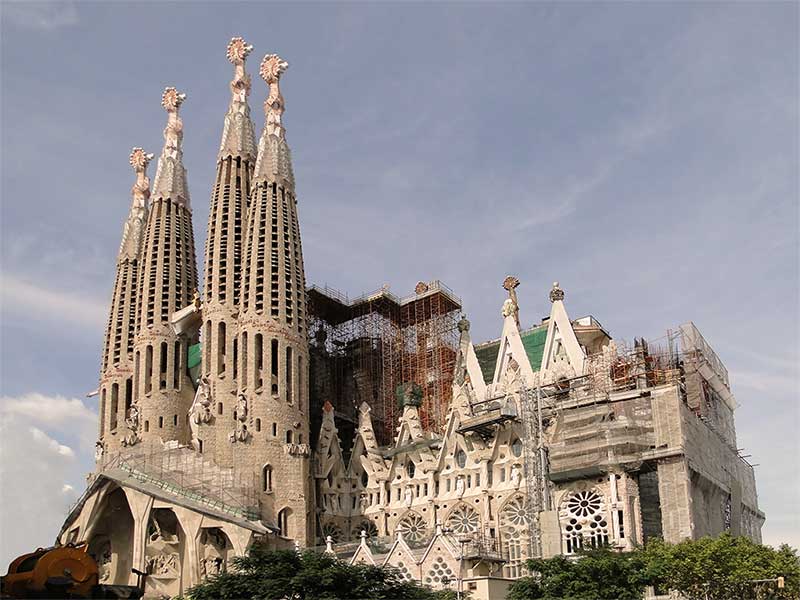
This site hasn’t been updated since 2012. You can still peruse who I was back then, but know that much of what I think, feel, write, and do has changed. I still occassionally take on interesting projects/clients, so feel free to reach out if that’s what brought you here. — Nishant
My wife and I recently visited Sagrada Família in Barcelona. It is a humongous and intricately planned Catholic church designed by the renowned architect, Antoni Gaudí. Apart from the fantastic details, symbolism, and architectural innovations it boasts, what really makes Sagrada Família stand out from the hundreds of other Catholic churches around the world is that it is still under construction. And this is by design.

Indeed, construction on this church commenced in 1882, and Gaudí planned for its construction to continue well after his death in 1926. At this time, the estimated completion date is 2026, Gaudí's death centennial.
Why on earth would a designer plan for one of his projects to be completed after his death especially if he knew that it was to be the most significant work of his career, and possibly of any architect's career? Seems like an insane move.
But you know what they say about the line between insanity and genius. And Gaudí was no basket case.
Gaudí, a devout Catholic, envisioned the most intimate of prayer destinations for his fellow Catholics. And he figured the best way to capture this intimacy was to execute one of the bravest maneuvers in design: allow others to complete his design. Indeed, his blueprints left guidelines for architects from future generations on how to complete different parts of the church.
Contrary to popular belief, the genius of Gaudí wasn't his nature-inspired architecture. It was his vision of laying a framework that allowed for future generations to play a key role in the outcome of the Sagrada Família. And the result is a breathtaking structure that is as much the peoples as it is Gaudí's. Magnificent, intimate, and in a class of its own, even if controversial.
Twitter, in so many ways, is the Sagrada Família of the tech world. The best of Twitter — mentions, retweets, hashtags, to name a few – came from its users or third-party applications. And Twitter's unique genius was that they embraced these innovations, in turn making Twitter something bigger than what it ever set out to be. But that era seems to have just ended.
Folks like Gruber, Arment, and Brooks have summed up pretty much all there is to be said. There's one point I read somewhere that I disagree with, though: that 99% of twitter users won't be able to tell the difference. Sure, they won't be able to tell the difference today. But what about tomorrow?
Twitter's move is akin to ending construction too prematurely on Sagrada Família. If that had happened, the Sagrada Família would have become just another church. And, I suppose that's not a bad thing.
But it's certainly not what it could have been.